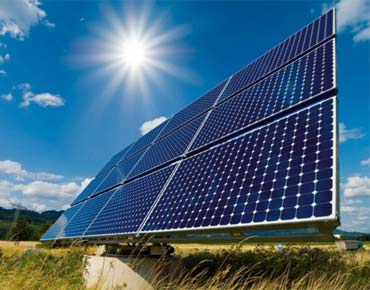Photovoltaic cells or panels are one way of generating electricity from solar energy. They are the most convenient to use on a small to medium scale. PV cells are mostly made from silicon. While silicon itself is a very abundant mineral, the manufacture of solar cells has to be in a very clean environment. A PV cell is constructed from two types of silicon, which when hit by solar energy, produce a voltage difference across them, and, if connected to an electrical circuit, a current will flow. A number of photovoltaic cells will be connected together in a "Module", and usually encapsulated in glass held in a frame which can then be mounted as required. The cells in a module will be wired in series or parallel to produce a specified voltage. What may be referred to as a 12 volt panel may produce around 16 volts in full sun to charge a 12 volt battery. In most cases, a number of panels (modules) will be connected together to form an "Array". Panels of a similar type may be connected in series to give a higher voltage (two 12 volt panels may be connected in series to produce 24 volts). Usually a number of panels will be connected in parallel to give an increased current.
|
|




